It was our last full day on Maui. The weather forecast warned about a rainy day. Yet we still had to drive the scenic Road to Hana and its backside sibling, the Back Road to Hana, embracing the weather, rain, and everything the island had prepared for us in early March.
Last updated: March 21, 2025
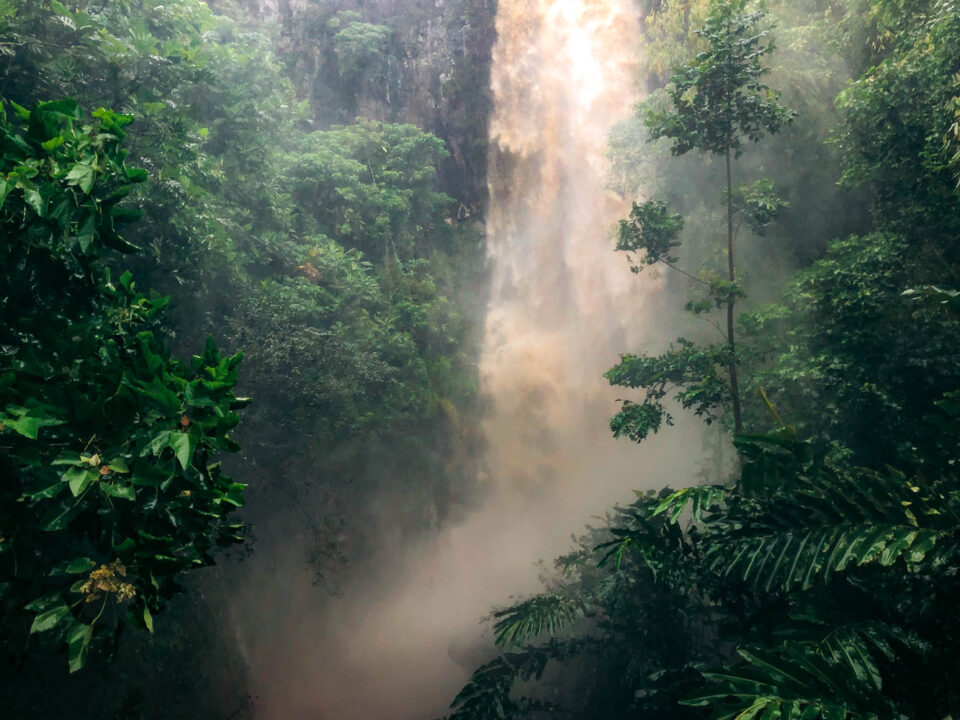
The Best Things to Do along the Road to Hana and the Backside Road to Hana in March (Rainy Adventure)
They say it’s the most beautiful part of the island. They say it’s the greenest corner of Maui. And they also say it’s the rainiest place of them all. Indeed, it does rain a lot in the famous Road to Hana area. Not so much along the Back Road to Hana, though.
Controversy surrounds the area. Many urge you to visit the Road to Hana and explore its spectacular beaches, roaring waterfalls, and dense jungles. Others say the place is overrated.
I personally loved it. It was definitely worth our time. I admired lush greenery surrounding Maui’s famous Road to Hana. Its dense canopy obscured the sky. Long, dangling branches of lianas descended to the ground in thick veils. And the rain…
Well, the rain didn’t hesitate to leave its mark on the winding routes, both the main Road to Hana and its backside highway. The wet weather’s frequent visits shaped every corner of the eastern side of Maui.
The Back Road to Hana
Most of the Back Road to Hana, the closest relative of the Road to Hana, however, can’t boast such a lush natural opulence. Known as Highway 31, this windswept route accesses the tropical jungle and the most isolated town on Maui, from the back door, approaching Hana first and then winding along the coast, lined with waterfalls and pristine beaches.
Hardly any trees adorn the first section of the Reverse Road to Hana. The route starts in Kula, runs past the Kipahulu District of Haleakala National Park, travels to Hana, Paia, and finally ends in Kahului.
Shrubs and bushes with their crowns burned by the tropical sun can be seen here and there. In most parts, the area is plain and deserted. In early March, when we drove the Back Road to Hana, this part of Maui reminded me of Joshua Tree National Park after the rainy season.
Things to Know: Some rental car companies dissuade their drivers from taking unpaved roads. The winding Back Road to Hana is too narrow, too rough, and too bumpy for a small car. These conditions worsen during the rainy season, which lasts from January through March in Hawaii.
We were perplexed by these warnings at first as the two-lane Back Road to Hana didn’t look anything like a difficult route to drive along even in the heavy rain. It was paved, empty, with just a car or two driving in the opposite direction, and not particularly beautiful…

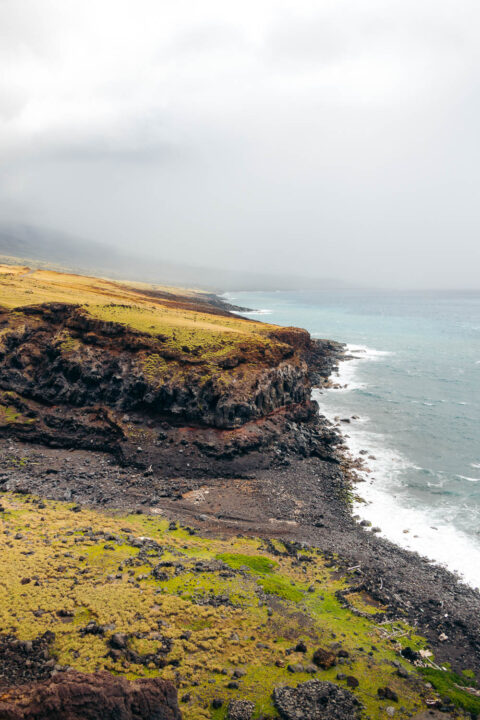
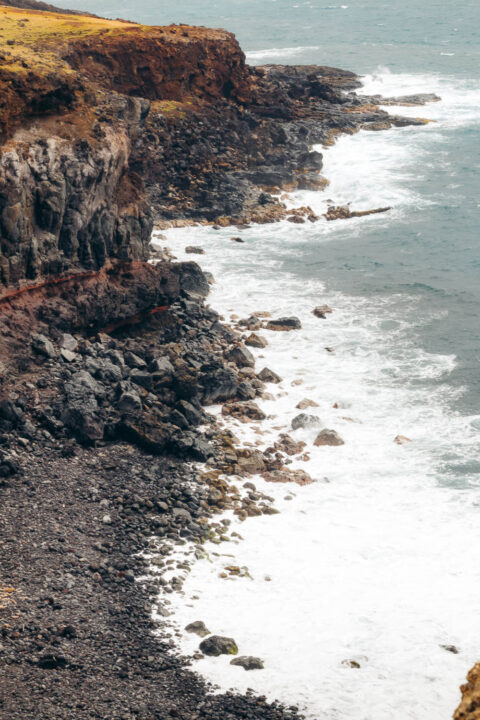
Scenic Part of the Backside Road to Hana at Last
The scenery changed dramatically about one hour before we reached the Pipiwai Trail, the only access to Haleakala National Park from the Road to Hana area. The ocean finally came into view. Heavy swells broke on the rocky shore. Sweeping hills across the road gave some ground for the eyes to wander.
The Back Road to Hana looked dramatic despite light drizzle. With that long, plain stretch behind us, the area finally showed us its beautiful side. I had to admit right then, the Back Road to Hana, windy and overcast, had its own charm and allure.
The views of the mesmerizing hills didn’t pamper us for a long time before the scenery changed once again. And so did the Back Road to Hana itself. The paved, two-lane highway transformed into a winding, bumpy one-lane road.
This was that section of the Reverse Road to Hana where during the rainy season small cars faced some of their biggest challenges. Large puddles dotted the road more frequently, some so deep that the water reached the bottom of the car doors.
But the roaring streams rushing under the road, the lush tropical rainforest, and a sense of adventure made you forget about all the troubles the rainy season had brought and enjoy your journey along the Back Road to Hana.
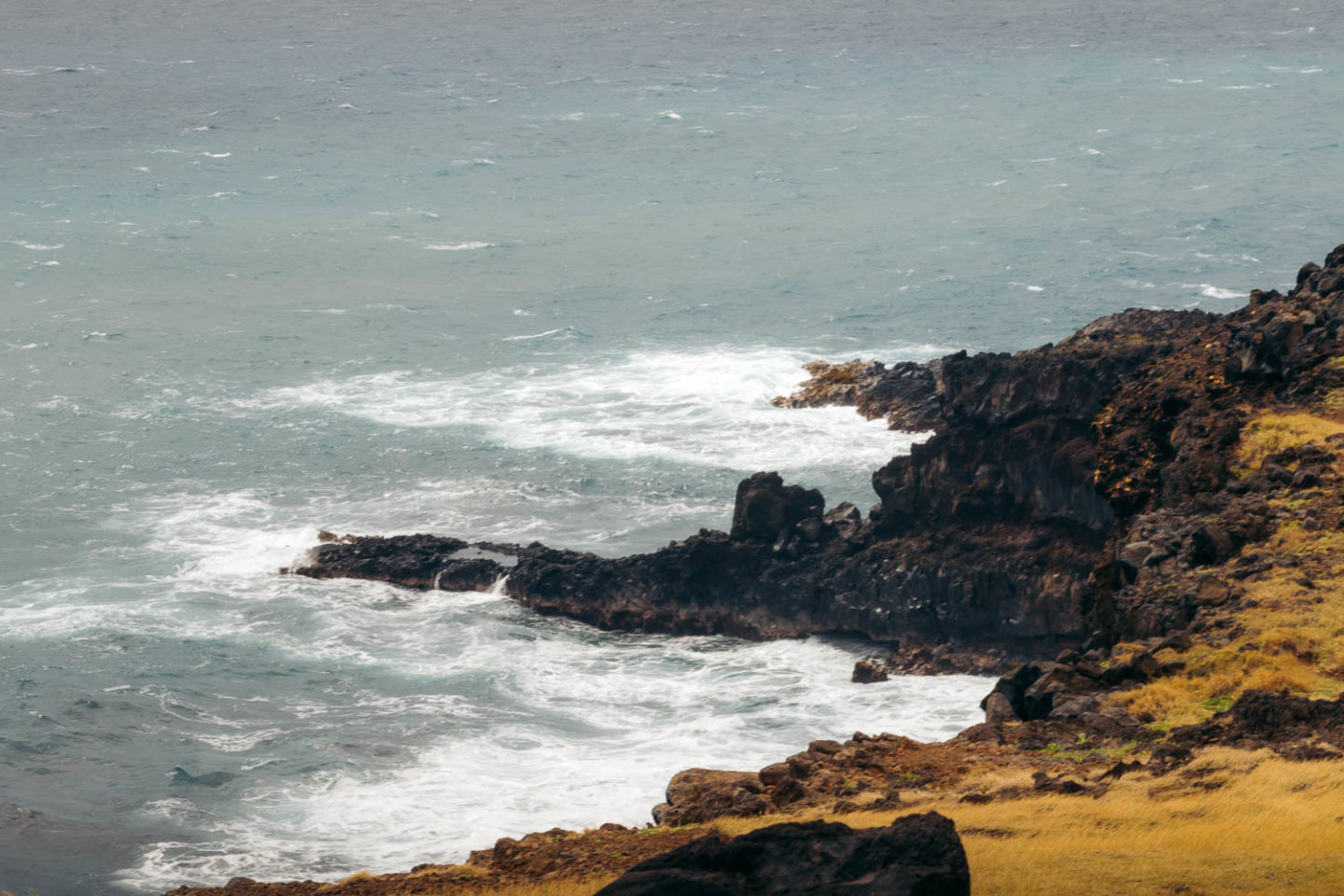
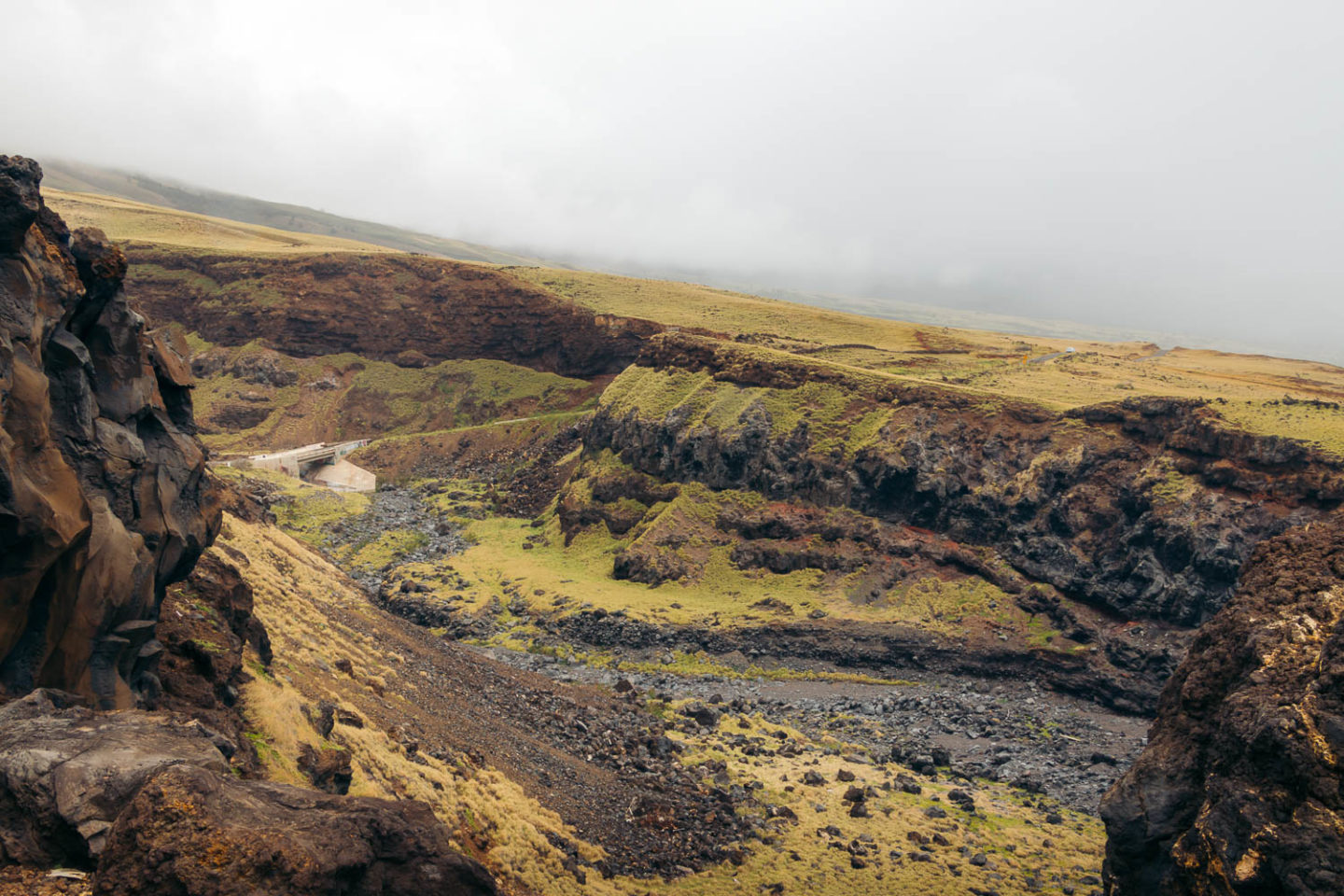
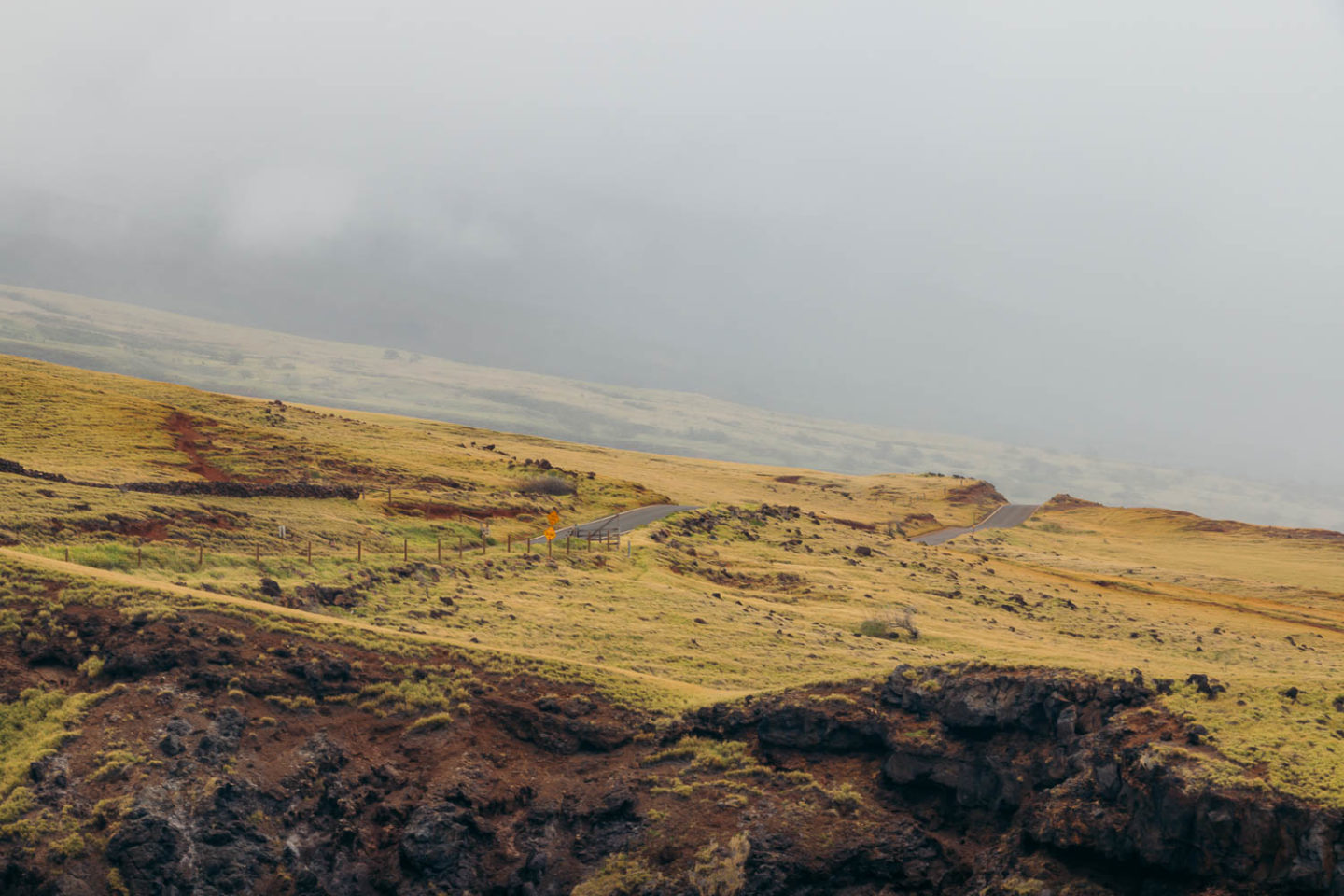
Why Should You Take the Backside Road to Hana
The Back Road to Hana is shorter. It takes approximately 2 hours 30 minutes to get to the Pipiwai Trail, one of the most coveted places in the Hana Road area, from Lahaina. You will need more than 3 hours to reach the same destinations while driving from Lahaina along the Road to Hana.
Since the parking spaces at the Pipiwai Trailhead are limited, you want to get there ideally by 10 a.m. Otherwise you may need to wait in line for the next parking spot to open up. A rainy day in the Road to Hana area would probably be an exception. But then you may not be that enthusiastic about hiking through the jungle when it rains cats and dogs.
TIP: With that said, plan to start your adventures along the Road to Hana early in the morning. The area is vast and offers many attractions. You need at least one day to explore them all.
Alternative Itinerary: Alternatively you can split your adventures along the Road to Hana into two day excursions. Do the Road to Hana in one day. Stay overnight in Hana. And spend the second day hiking in the Kipahulu District of Haleakala National Park and driving the Backside Road to Hana.
From the Kipahulu District you will travel against the traffic, in the opposite direction of the traditional Road to Hana. So not only you can save time, but also many of the places farther down the road may be devoid of their regular crowds by the time you reach them.
ROAD TO HANA IN MARCH (RAINY SEASON): BEST THINGS TO DO
Pipiwai Trail
The rainy season on a tropical island is a serious obstacle to having a perfect vacation you dream of. The rain almost missed us along the Back Road to Hana. But the forces of nature were not on our side later that day.
We didn’t even finish the Pipiwai Trail hike when it started pouring nonstop. After allowing us to enjoy spectacular views of Makahiku Falls, walk under protruding branches of the gigantic banyan tree, and tread through the bamboo forest, the rain stopped us in our tracks near Waimoku Falls. It was raining for the rest of the day.
With all our umbrellas and ponchos regretfully left in the car (not even a plastic bag to cover a camera) we had to head back.
This rainy part of Maui, however, harbors another must-see attraction – the Pools of Oheo, one of the most picturesque places in the Road to Hana area.
READ MORE: Haleakala National Park: Hawaii Taught Us to Slow Down
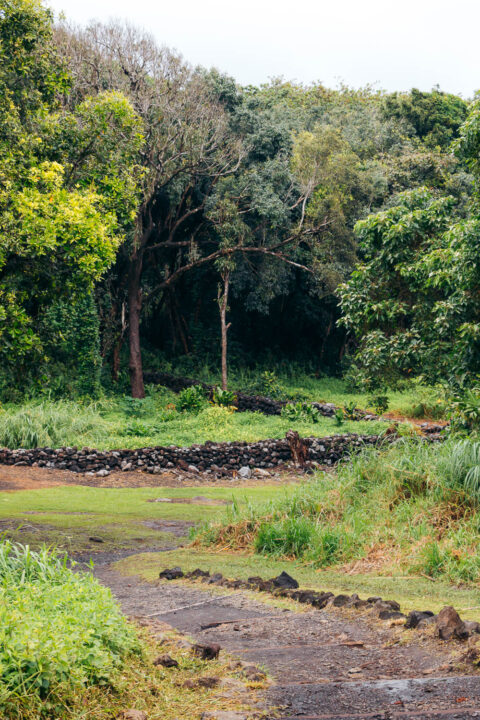
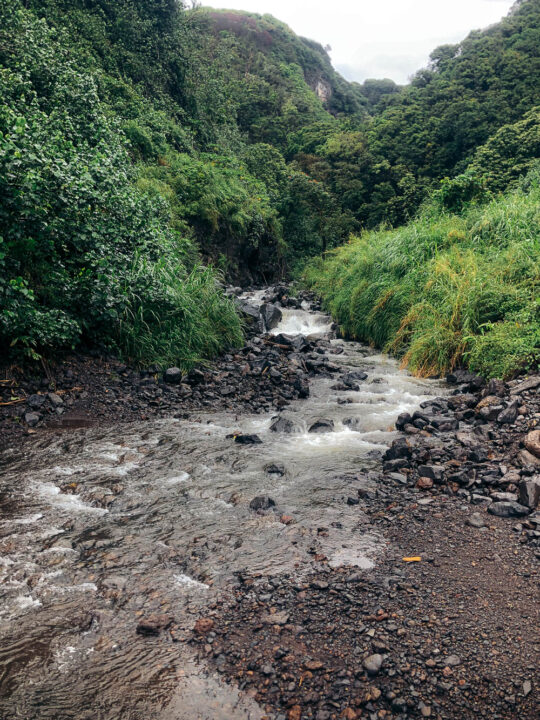
Wailua Falls
It may sound absurd, but the rainy season may be just the best time to go for a ride along the Road to Hana if you want to see massive, cascading waterfalls. The 80-foot Wailua Falls is located right off the highway. You can roll down the windows and enjoy it from the car without giving the rain even a slight chance to spoil your Road-to-Hana adventure.
If you are lucky and explore the area on a day with frequent “dry” windows in between rainy sessions, you can attempt a little hike. The 0.8-mile, out-and-back Wailua Trail takes you to a swimming pond at the base of the waterfall.
READ MORE: Rainbow Falls in Hilo, Big Island
Kaihalulu Beach
Out of all the beaches along the Road to Hana, I desperately wanted to see just two. Kaihalulu Beach or otherwise known as Red Sand Beach was one of them. As the name suggests, red sand covers the shore of a hidden cove located on Kaihalulu Bay.
Hana
Technically, the Road to Hana starts just here, at this beautiful, isolated location with rich history.
Wai’anapanapa State Park and Black Sand Beach
Nestled at the end of Wai’anapanapa Road off the Hana Highway, the state park boasts freshwater streams and glistering pools. But the main attraction here is Black Sand Beach. Yes, the sand is black indeed in this tiny part of the Hana Road area.
Many visitors of Maui long to see this natural phenomenon. So expect crowds. On the other hand, you may have the entire place to yourself on a day when the rain is heavy and unstoppable.
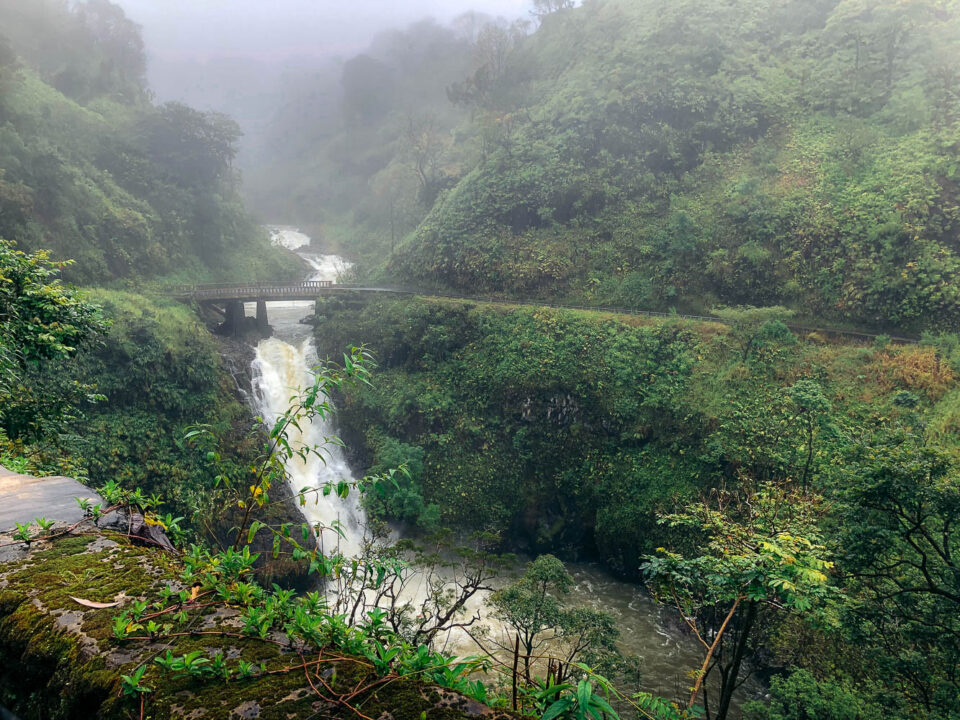
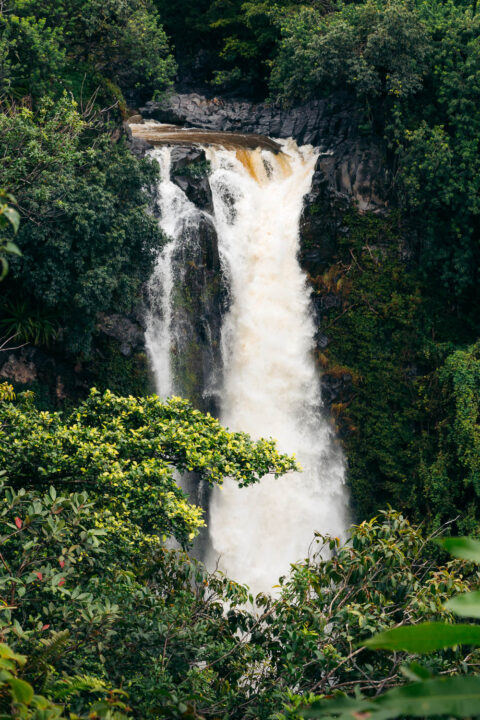
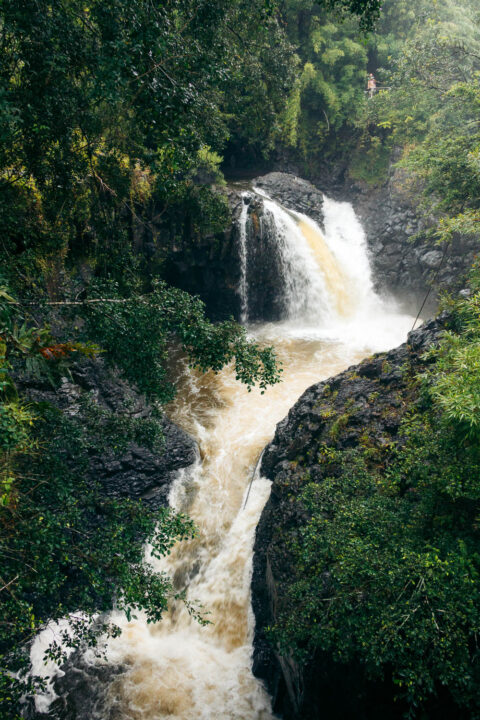
Hana Lava Tube
To the right off the Hana Road, along Ulaino Road, you will find another natural wonder. The Hana Lava Tube was formed by underground lava rivers some 960 years ago. This 0.5-mile, out-and-back trail is easy to walk through and takes approximately 40 minutes to complete.
Admission: $15.
Makapipi Falls
Makapipi Falls makes your adventures along the Road to Hana extra special regardless whether the sun shines brightly or the rain pours unstoppably. The waterfall plunges from a lava-rock chute, streams under a bridge, and drops into a blue pool.
NOTE: The Road of Hana has 56 bridges. 46 of them are one lane wide. So some traffic congestion is inevitable here.
Hanawi Falls
Another roadside attraction, Hanawi Falls is an incredible destination to check out on a rainy day in the Hana Road region. A series of cascading waterfalls tumble over forested rocks into a swimming pond. On a sunny day, you may want to stay longer in this part of the road and cool down in the pool below.
TIP: The path down to the swimming pool can be slippery due to the frequent rains. So walk slowly and use caution.
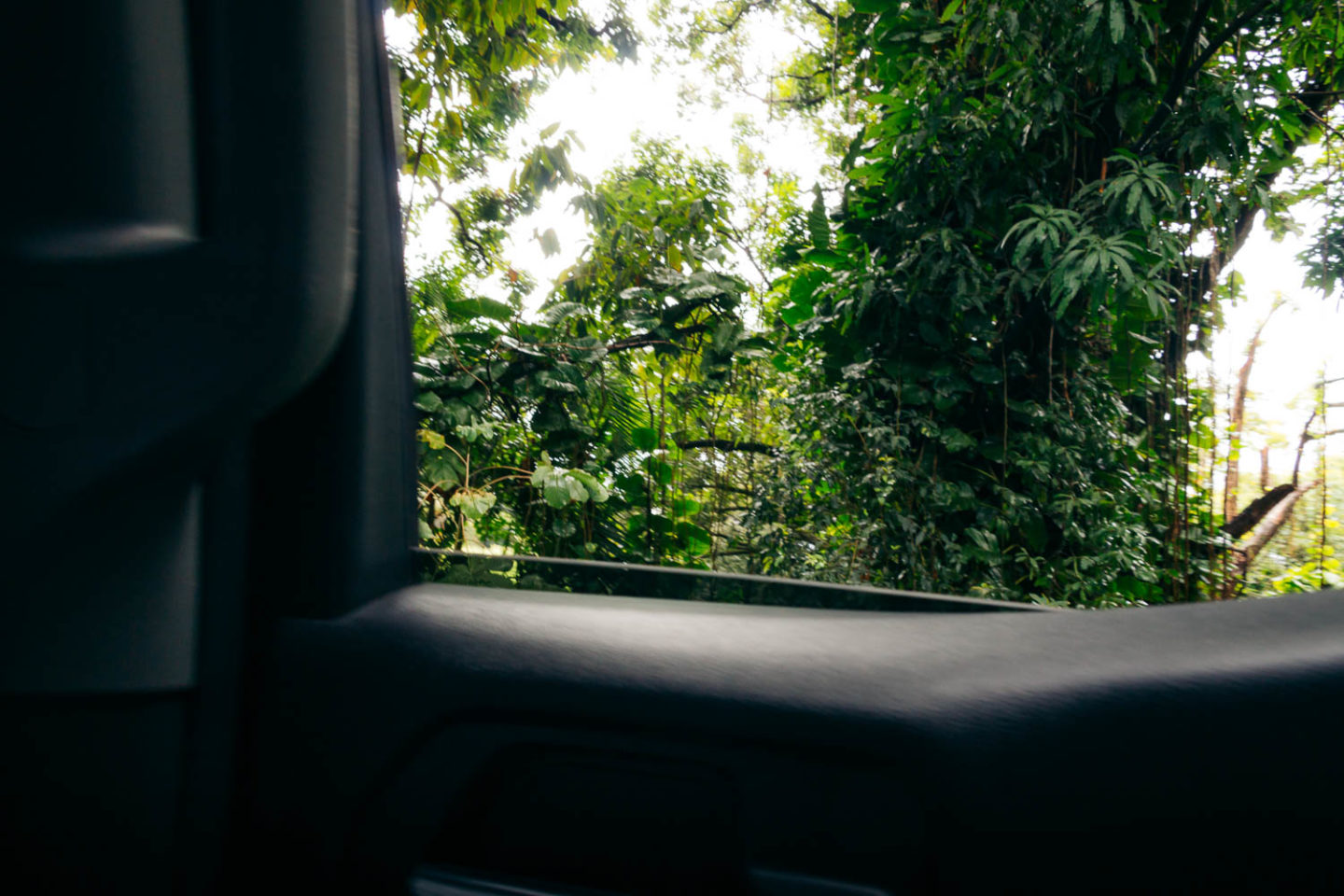
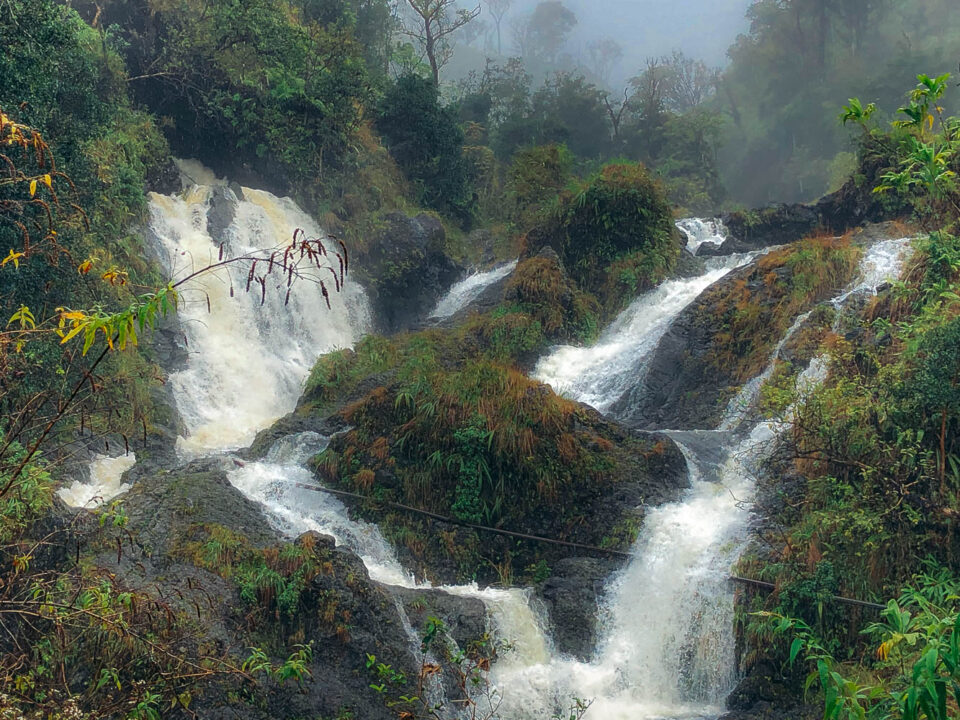
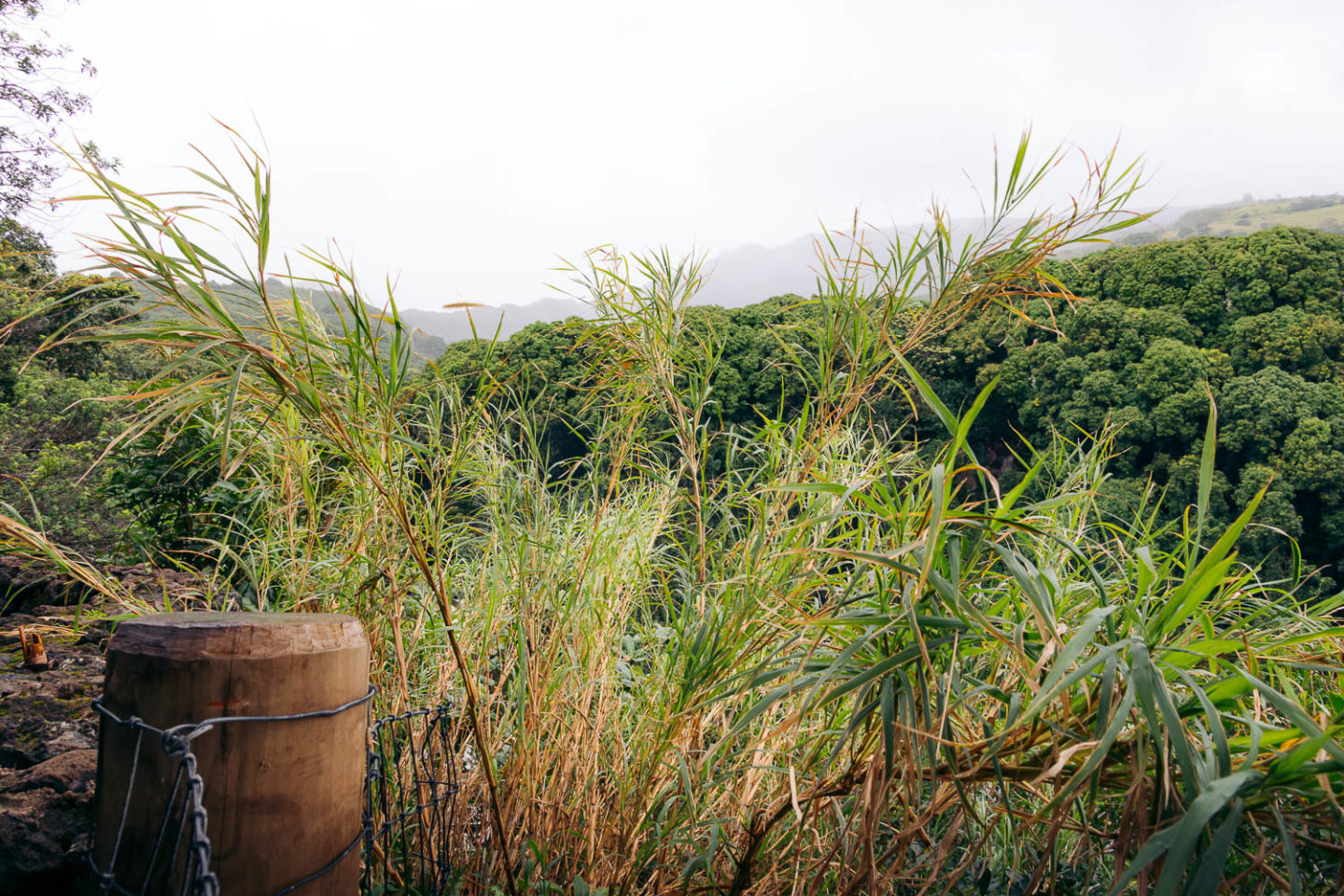
Ke’anae Arboretum
A little gem along Ke’anae Road, Ke’anae Arboretum is famous for its rainbow eucalyptus grove. If the rain is not too heavy, be sure to walk through this gorgeous corner, sprinkled with tropical flowers and trees.
Ho’okipa Beach Park
The main reason why you want to end your rainy trip along the Road to Hana at Ho’okipa Beach Park, located 3 miles away from Paia, are sea turtles. These creatures are not afraid of the frequent showers the nature bestows on the area and can be often spotted resting on the beach.
Road to Hana and Back Road to Hana in March: Map
Things to Know before Driving the Road to Hana and the Backside Road to Hana
Winding Road
The Road of Hana is 64.4 miles long. It stretches from Kahului to the isolated town of Hana on the eastern side of Maui. Many travelers extend their trips, adding the Pipiwai Trail to their excursions.
Although the distance is relatively short, it takes approximately 2 hours 10 minutes to drive the entire route, packed with 620 curves and 59 bridges. The majority of these bridges are one way long. Traffic can be expected here, which further slows down the travels. Moreover, the Road to Hana may be slippery during and after the rain. Rockslides may happen.
Rainy Season
Maui gets most of its rain from January through March. The eastern side of the island, home to the famous Road to Hana, receives heavy rainfalls throughout the year.
The Best Time to Visit
Aim at getting to your desired destination along the Road to Hana early in the morning, before 10 a.m. or later in the afternoon. During these times, fewer crowds flock to this side of Maui. You can see even fewer visitors exploring the natural wonders along the Hana Highway during the rainy season.
Summer is the busiest time to drive along both the Road to Hana and the Back Road to Hana. The influx of visitors decreased by the end of the season.
Pack for Rain
Pack a poncho or an umbrella along with a bottle of water before setting off on a hiking adventure along the Road to Hana. It’s a tropical jungle after all. And the rain is one of the most reliable friends of the lush greenery here.
In other words, it will rain in the Hana Road area the day you go. But if it’s not the rainy season, you can expect plenty of “dry” windows to explore the area on foot.
READ MORE: How to Have an Amazing Trip Even if It Rains a Lot
Is the Road to Hana Worth It?
Absolutely yes. The drive can be challenging due to the multiple winding turns and narrow bridges. But in the end, it’s one of the places you will remember for years to come.
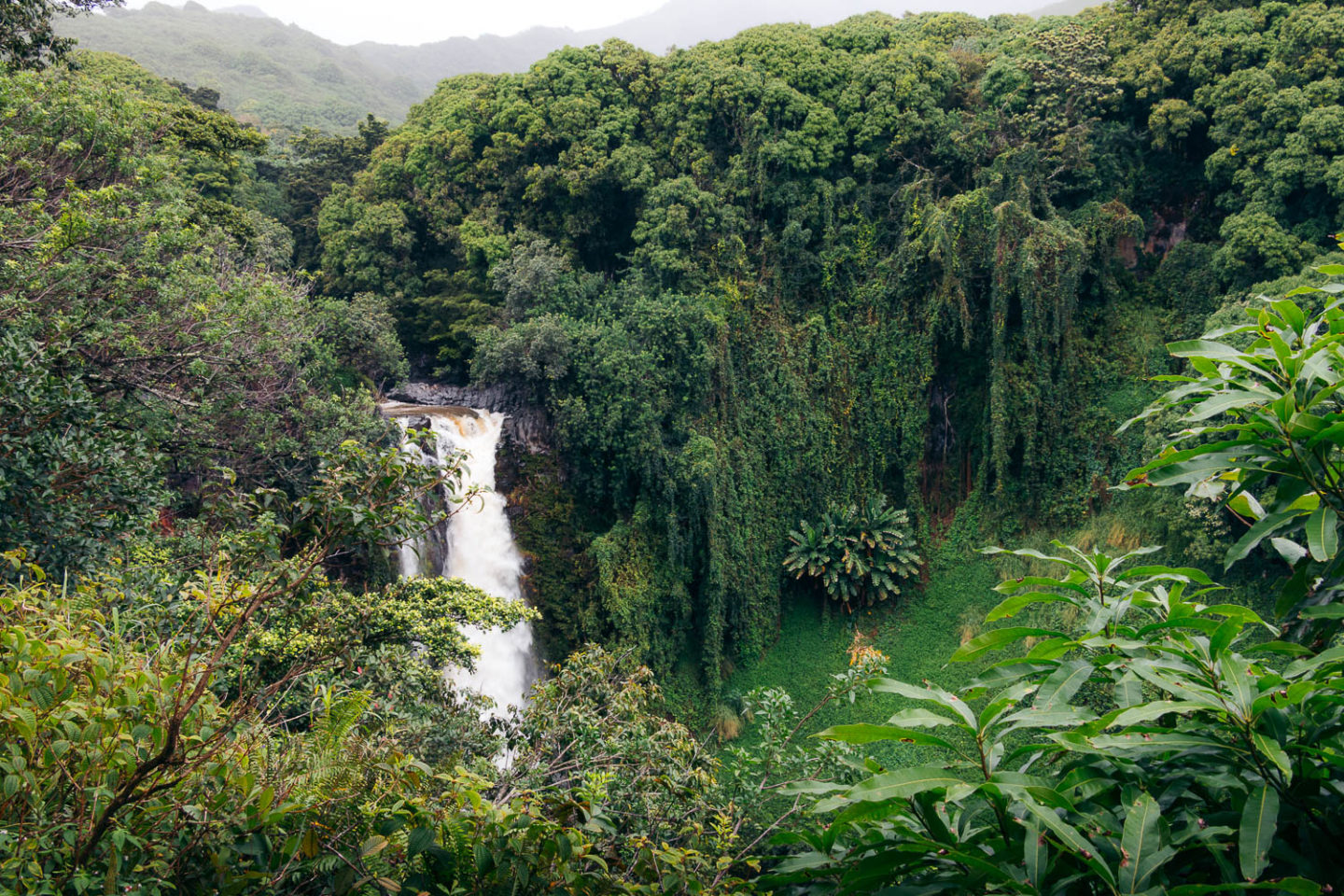
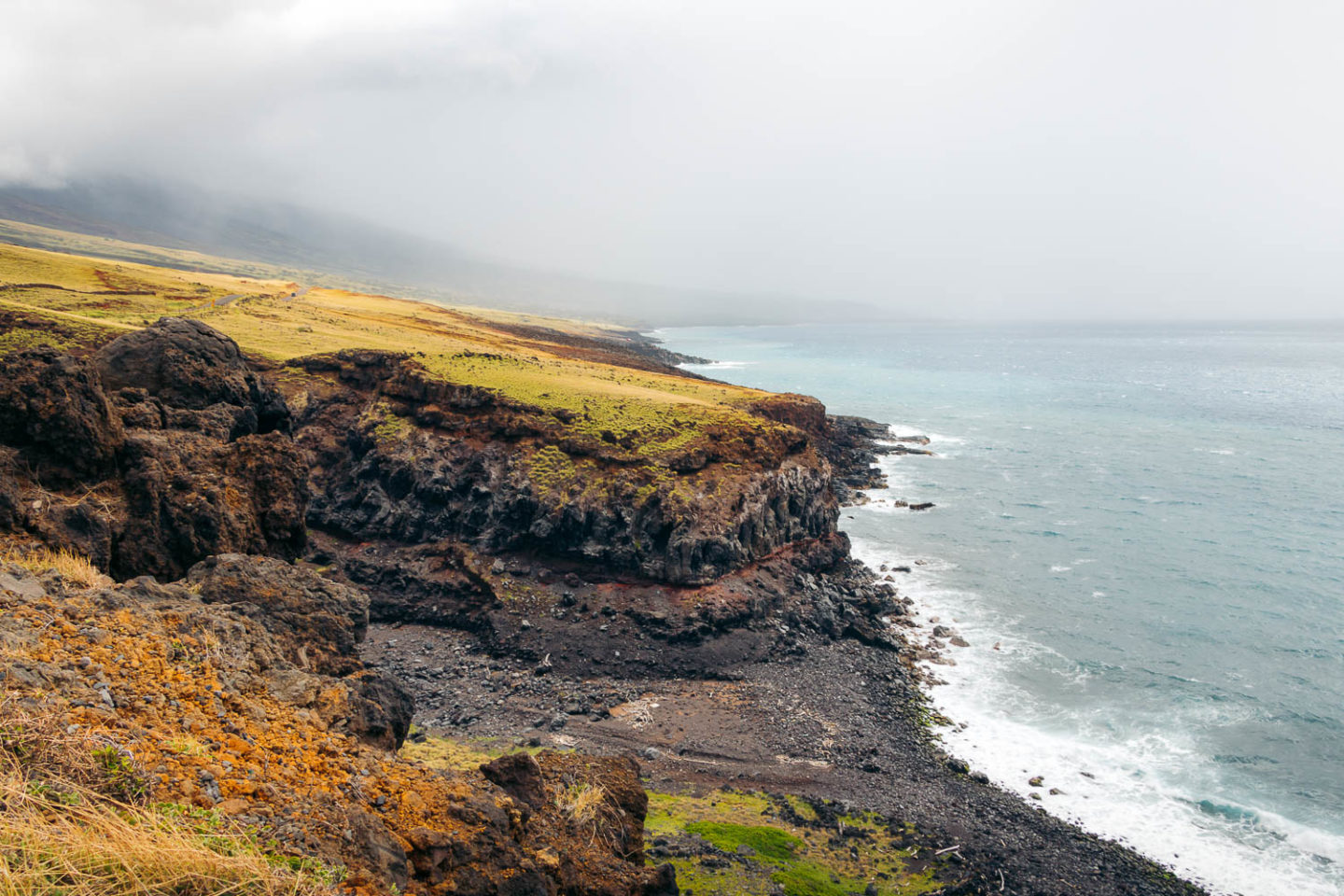
Read More
- FLOWER FIELD: Where to See Sunflower Fields on Maui
- BLOWHOLE, MAUI: Nakalele Blowhole – Maui’s Beautiful and Dangerous Jewel
- SUBMARINE ADVENTURE: The Underwater World of Maui: Atlantis Submarine Adventure
- OAHU WITHOUT CROWDS: 10 Best-Kept Secrets on Oahu, Hawaii